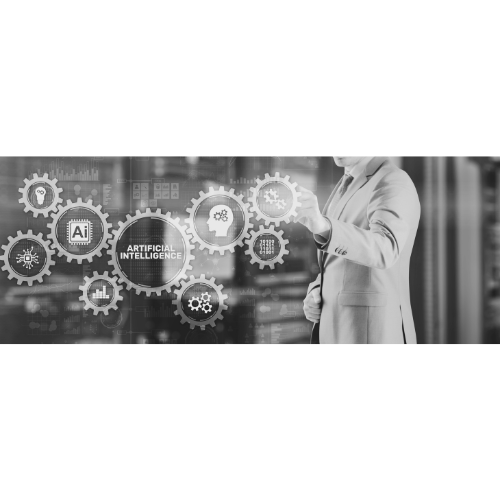Many times, people think of Artificial Intelligence (AI) as just Machine Learning (ML), similar to seeing the ocean and only acknowledging one wave. Yet, AI is a vast ocean with countless waves, currents, and depths, each representing unique sub fields and techniques.
In this post, we delve into the multifaceted universe of AI, breaking down its various components and giving you a clearer picture of its extensive scope.
Machine Learning
Techniques enabling computers to learn from and make decisions based on data.
- Supervised Learning: Training models using labeled data.
- Unsupervised Learning: Extracting patterns from unlabeled data.
- Reinforcement Learning: Machines learn by interacting with an environment and receiving feedback.
- Semi-Supervised Learning: Uses both labeled and unlabeled data for training.
- Transfer Learning: Leveraging knowledge from one task to improve performance on another.
- Ensemble Learning: Using multiple algorithms/models to obtain better predictive performance.
Deep Learning
Neural network architectures with multiple layers.
- Artificial Neural Networks: Basic neural network structures.
- Convolutional Neural Networks (CNNs): Optimized for image processing.
- Recurrent Neural Networks (RNNs): Designed for sequential data like time series.
- Generative Adversarial Networks (GANs): Two networks trained together, often used for generating new data.
- Transformer Networks: Attention-based networks, mainly for NLP.
Natural Language Processing (NLP)
Computer understanding and manipulation of human language.
- Text Classification: Assigning predefined categories to text.
- Named Entity Recognition (NER): Identifying entities (e.g., names, places) in text.
- Sentiment Analysis: Determining emotional tone of text.
- Language Translation: Converting text from one language to another.
- Question-Answering Systems: Answering queries with specific responses.
- Text Generation: Producing coherent and contextually relevant text.
Computer Vision
Computers processing and understanding images.
- Image Recognition: Identifying objects or themes in images.
- Object Detection: Pinpointing the location of objects within images.
- Image Segmentation: Partitioning an image into multiple segments.
- Image Captioning: Providing a verbal description of an image.
- Facial Recognition: Identifying or verifying a person from their face.
Robotics
Design, construction, and use of robots.
- Autonomous Robots: Robots that operate without human intervention.
- Robotic Process Automation (RPA): Automating rule-based tasks in business processes.
- Human-Robot Interaction (HRI): Study of interactions between humans and robots.
- Reinforcement Learning for Robotics: Applying reinforcement learning in robotic scenarios.
Expert Systems
Computer systems that emulate decision-making abilities of a human expert.
- Knowledge-Based Systems: Use knowledge about a specific domain to solve specific problems.
- Rule-Based Systems: Make decisions based on a set of predefined rules.
- Inference Engines: Processes that infer logical conclusions from a base of knowledge.
Knowledge Representation
Storing and inferring information.
- Ontologies: Organized hierarchies of concepts.
- First-Order Logic: Symbolic logic system.
- Semantic Web: Web content readable by machines.
Speech Recognition
Machines converting spoken language into written text.
- Automatic Speech Recognition (ASR): Converting speech into text.
- Speech-to-Text Conversion: Synonym for ASR.
- Speech Synthesis (Text-to-Speech): Converting written text into spoken words.
Virtual Agents and Chatbots
Interactive agents that converse in a natural language.
- Conversational Agents: Chatbots that simulate human conversation.
- Dialogue Systems: Framework for developing conversational agents.
- Chatbot Development: Process of designing and implementing chatbots.
Autonomous Vehicles
Vehicles capable of navigating without human input.
- Self-Driving Cars: Cars that can drive autonomously.
- Advanced Driver Assistance Systems (ADAS): Systems supporting the driver in the driving process.
- Computer Vision for Autonomous Vehicles: Use of image processing in autonomous vehicles.
Recommendation Systems
Provide personalized suggestions to users.
- Collaborative Filtering: Recommendations based on user-item interactions.
- Content-Based Filtering: Recommendations based on item attributes.
- Hybrid Approaches: Combining multiple recommendation techniques.
Game Playing AI
AI designed for games.
- Chess AI: AI specialized in playing chess.
- Go AI: AI designed for the game of Go.
- Video Game AI: AI algorithms used within video games.
Knowledge Graphs
Networks of interconnected data and concepts.
- Graph-Based AI: Using graphs to model knowledge.
- Semantic Graphs: Graphs representing meanings and relationships.
Cognitive Computing
Simulating human cognitive functions.
- Emotion AI: Recognizing and responding to human emotions.
- Context-Aware AI: AI that understands and responds to context.
Swarm Intelligence
Collective behavior of decentralized systems.
- Ant Colony Optimization: Optimization based on the behavior of ants.
- Particle Swarm Optimization: Optimization technique inspired by the social behavior of birds.
Remember, while AI is expansive and ever-evolving, it’s always an umbrella term encompassing a multitude of specialized fields.
